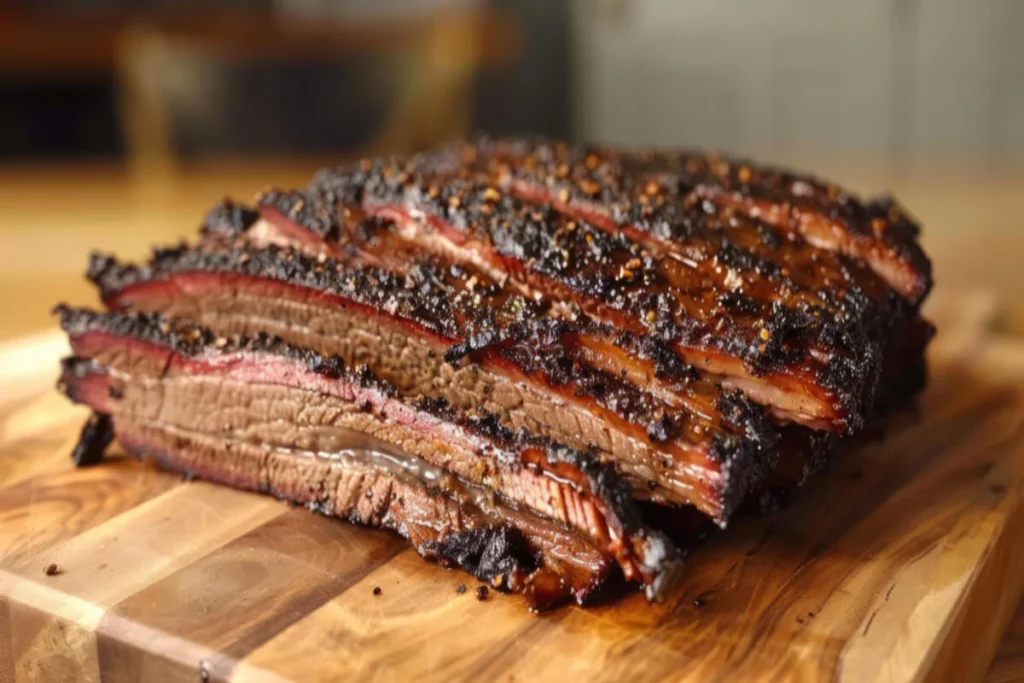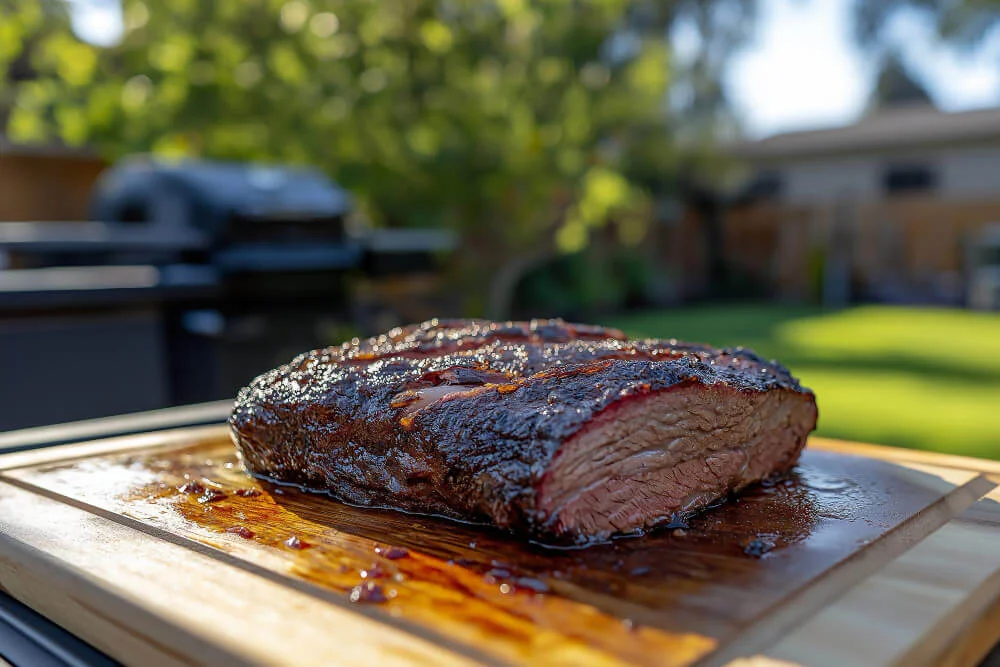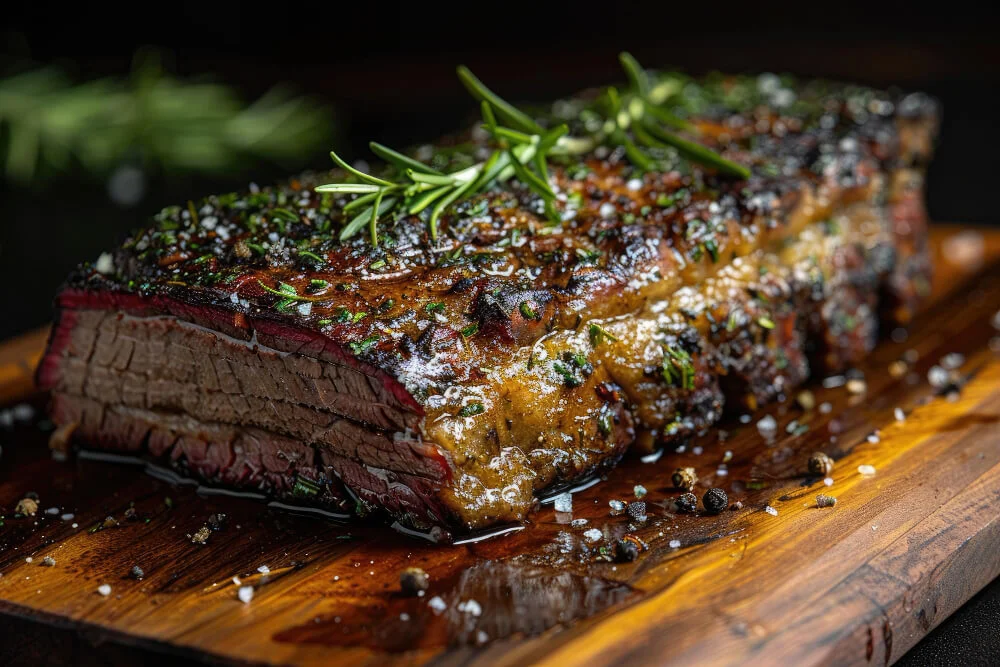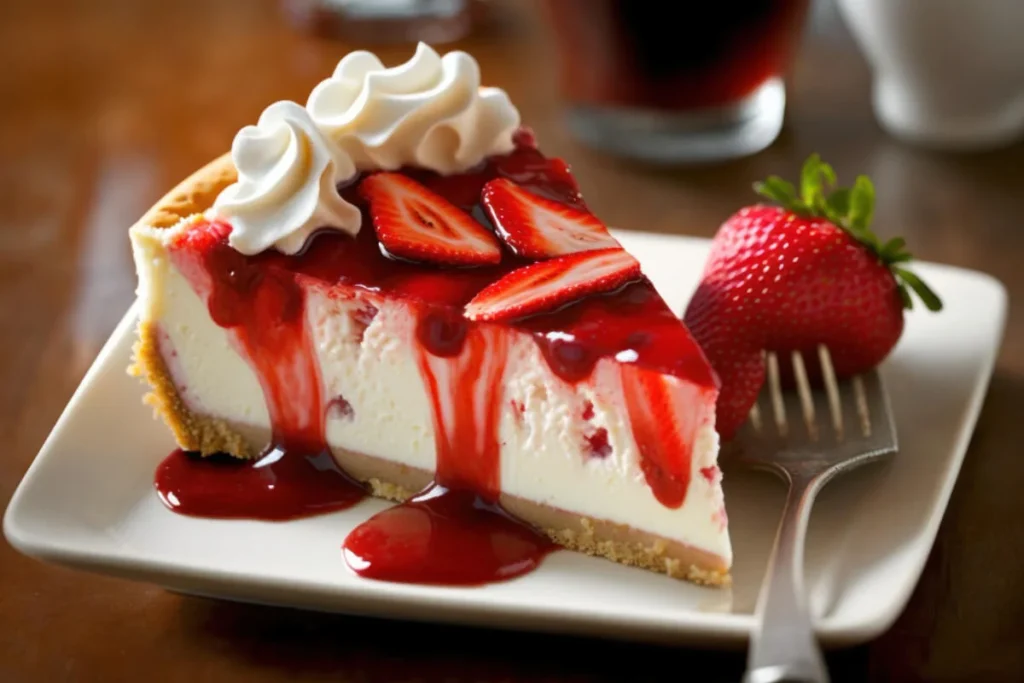
Introduction
Cooking with a Traeger recipes isn’t just about grilling—it’s about enhancing flavor, convenience, and versatility in outdoor cooking. Unlike traditional charcoal or gas grills, a Traeger wood pellet grill uses natural hardwood pellets, delivering an authentic smoky flavor while maintaining precise temperature control. Whether you’re grilling, smoking, roasting, baking, braising, or barbecuing, a Traeger allows you to cook with consistency and ease.
One of the biggest advantages of Traeger grills is their set-it-and-forget-it technology. The digital temperature control and automated pellet feeding system mean you don’t have to constantly check or adjust the heat. This makes Traeger perfect for low-and-slow smoking, as well as quick, high-heat grilling. Whether you’re a beginner or a seasoned pitmaster, a Traeger grill allows you to cook restaurant-quality meals in your own backyard.
The History of Traeger Grills
How Wood Pellet Grills Revolutionized Outdoor Cooking
The concept of wood pellet grilling was pioneered in 1985 by Joe Traeger, who sought a way to combine the smoky flavor of wood cooking with the convenience of gas grilling. His invention, the Traeger wood pellet grill, used an auger system to feed compressed wood pellets into a firepot, allowing for precise temperature control without the need for constant monitoring.
This innovation revolutionized outdoor cooking, making it easier for home cooks to achieve consistent, smoky flavors without the challenges of managing a traditional charcoal or wood fire. Unlike conventional grills, Traeger’s design allowed users to set a temperature and walk away, as the grill automatically regulated heat and fuel levels.
For nearly two decades, Traeger held the exclusive patent on wood pellet grill technology, making them the go-to brand for pellet grilling. Today, Traeger remains one of the most trusted and popular names in outdoor cooking.
The Popularity of Traeger Grilling for Home Cooks
Over the years, Traeger grills have grown from a niche BBQ tool to a mainstream household favorite. Their rise in popularity can be attributed to:
- Ease of Use: Unlike traditional smokers or charcoal grills, a Traeger requires minimal effort—just set the temperature, load the pellets, and cook.
- Versatility: Beyond grilling and smoking, Traeger grills can bake, roast, and braise, making them a complete outdoor kitchen solution.
- Consistent Results: With WiFIRE technology (on newer models), users can monitor and adjust cooking temperatures remotely via a smartphone app, ensuring perfect results every time.
- A Growing BBQ Community: Traeger has built a loyal following of grill enthusiasts, with online communities, recipes, and competitions dedicated to wood-fired cooking.
Essential Tips for Cooking with a Traeger Grill
Cooking on a Traeger wood pellet grill takes your BBQ game to the next level, but mastering the right techniques and flavors makes all the difference. Here are essential tips to help you get the best results every time.
Choosing the Right Wood Pellets for Flavor
The type of wood pellets you use significantly impacts the flavor of your food. Different hardwoods pair well with different proteins:
- Hickory – Strong, smoky flavor; best for brisket, ribs, and pork shoulder.
- Mesquite – Bold and intense; great for steak and beef but can overpower delicate meats.
- Applewood – Mild and slightly sweet; ideal for chicken, pork, and seafood.
- Cherry – Fruity and subtle; works well with pork, poultry, and desserts.
- Maple – Light sweetness; pairs well with vegetables, poultry, and baked goods.
- Oak – Medium smoky flavor; versatile for beef, fish, and lamb.
Understanding Temperature Control for Perfect Results
One of the biggest benefits of a Traeger grill is its precise temperature control. Here’s how to make the most of it:
- Low & Slow (180–225°F): Best for brisket, ribs, and smoked salmon to develop deep, smoky flavors.
- Medium Heat (300–375°F): Great for chicken, turkey, and vegetables to get a crispy exterior while staying juicy inside.
- High Heat (400–500°F): Perfect for steaks, burgers, pizza, and baking desserts.
Preheating and Cleaning Your Traeger for Optimal Performance
Keeping your grill in top shape ensures better performance and longer lifespan.
- Always Preheat Your Grill: Let your Traeger preheat for 10–15 minutes before cooking to stabilize the temperature.
- Clean the Grease Trap Regularly: Excess grease can cause flare-ups and unwanted flavors.
- Vacuum Out Ash Buildup: After every 3–5 cooks, remove excess ash from the firepot for better efficiency.
- Use a Grill Cover: Protect your Traeger from moisture and dust to extend its life.
Best Traeger Recipes for Every Occasion
Smoked Meats & BBQ Favorites
Smoked Brisket with a Perfect Bark
- Wood Pellets: Hickory or oak
- Cooking Temp: 225°F
- Cook Time: 10–12 hours
- Key Tip: Wrap in butcher paper at 165°F internal temp to keep it juicy.
- Cook Time: 12–14 hours
- Key Tip: Shred the pork at 200–205°F internal temp for the best texture.
Competition-Style Ribs with a Sweet and Spicy Rub
- Wood Pellets: Hickory or cherry
- Cooking Temp: 225°F
- Cook Time: 5–6 hours (following the 3-2-1 method)
- Key Tip: Wrap in foil with butter and brown sugar for ultra-tender ribs.
Seafood on the Traeger
Smoked Salmon with Maple Glaze
- Wood Pellets: Maple or alder
- Cooking Temp: 180°F
- Cook Time: 2 hours
- Key Tip: Brush with a maple syrup glaze for a rich, caramelized finish.
Traeger-Grilled Shrimp Skewers
- Wood Pellets: Cherry or apple
- Cooking Temp: 350°F
- Cook Time: 5–7 minutes
- Key Tip: Marinate in garlic butter and lemon juice before grilling.
Traeger Chicken & Poultry Recipes
Whole Smoked Chicken with Crispy Skin
- Wood Pellets: Hickory or apple
- Cooking Temp: 325°F
- Cook Time: 2–3 hours
- Key Tip: Pat dry and rub with butter and seasoning for crispy skin.
BBQ Smoked Turkey for Holidays & Special Occasions
- Wood Pellets: Maple or pecan
- Cooking Temp: 275°F
- Cook Time: 3–4 hours
- Key Tip: Brine the turkey overnight for the juiciest meat.
Vegetables & Side Dishes
Smoked Mac and Cheese with Bacon
- Wood Pellets: Hickory
- Cooking Temp: 250°F
- Cook Time: 1 hour
- Key Tip: Add crispy bacon and extra cheese for a smoky, creamy texture.
Traeger-Roasted Brussels Sprouts with Balsamic Glaze
- Wood Pellets: Cherry or maple
- Cooking Temp: 375°F
- Cook Time: 30–40 minutes
- Key Tip: Toss with balsamic and honey for a sweet, caramelized flavor.
Desserts on the Traeger
Smoked Peach Cobbler
- Wood Pellets: Apple or cherry
- Cooking Temp: 350°F
- Cook Time: 45–50 minutes
- Key Tip: Serve with vanilla ice cream for a perfect pairing.
Traeger-Baked Chocolate Chip Cookies
- Wood Pellets: Maple
- Cooking Temp: 350°F
- Cook Time: 12–15 minutes
- Key Tip: Use chilled dough for a chewy inside and crispy edges.

Expert Tips for Achieving the Best Flavor on a Traeger
How to Use Smoke to Enhance Different Foods
- Meats: Use longer cook times at lower temperatures to allow full smoke absorption.
- Vegetables: Roast at higher temperatures to bring out natural sweetness.
- Cheese & Nuts: Use a cold smoke setting to avoid melting while infusing flavor.
The Best Cooking Temperatures for Different Proteins
| Protein | Best Cooking Temp | Internal Temp (Doneness) | Recommended Pellets |
|---|---|---|---|
| Brisket | 225°F | 200–205°F | Hickory, Oak |
| Chicken | 325°F | 165°F | Hickory, Apple |
| Salmon | 180°F | 145°F | Alder, Maple |
| Steak | 450°F (sear) | 130–135°F (medium-rare) | Mesquite, Oak |
Common Mistakes and How to Avoid Them
| Mistake | Problem | Fix |
|---|---|---|
| Not preheating | Uneven cooking, weak smoke flavor | Preheat for at least 10–15 minutes |
| Over-smoking food | Bitter taste | Use mild woods like apple or cherry for delicate meats |
| Lifting the lid too often | Heat loss, longer cook times | Use a meat probe instead of checking visually |
Creative Ways to Use a Traeger Beyond BBQ
While Traeger grills are famous for their smoked meats and BBQ, they’re also incredibly versatile—allowing you to cook everything from wood-fired pizza to homemade bread. Here are some exciting ways to get the most out of your Traeger grill beyond traditional BBQ.
Wood-Fired Pizza on a Traeger
Forget the oven—your Traeger grill can create crispy, wood-fired pizza with that authentic pizzeria-style char and flavor.
How to Make the Perfect Traeger Pizza:
- Preheat the Grill: Set your Traeger to 450–500°F and allow it to heat for at least 15 minutes.
- Use a Pizza Stone: Place a preheated pizza stone on the grill grates for an extra crispy crust.
- Prepare the Dough: Stretch the dough and lightly brush with olive oil.
- Top & Grill: Add sauce, cheese, and toppings, then place on the stone. Cook for 10–15 minutes until the crust is golden and cheese is bubbly.
- Finish with Fresh Herbs: Once done, remove and top with basil, arugula, or a drizzle of olive oil.
Best Wood Pellets for Pizza:
- Oak for a traditional wood-fired taste
- Cherry for a subtle sweetness
- Mesquite for a bold, smoky flavor
Grilled Breakfast Dishes: Bacon, Eggs, and Pancakes
Your Traeger isn’t just for dinner—it can turn your morning meal into an unforgettable wood-fired breakfast.
Traeger Smoked Bacon
- Set the Traeger to 275°F and lay the bacon directly on the grates.
- Smoke for 30–40 minutes, flipping once.
- Enjoy crispy, smoky bacon with deep, rich flavor.
Grilled Pancakes
- Use a cast iron skillet or griddle on the Traeger.
- Preheat to 375°F, then pour pancake batter into the pan.
- Cook 2–3 minutes per side, flipping once.
Smoked Eggs (Hard-Boiled Style)
- Set the Traeger to 225°F and place raw eggs directly on the grates.
- Smoke for 30 minutes, then place in ice water.
- Peel and enjoy smoky, rich-flavored eggs.
Baking Bread and Pastries on a Pellet Grill
Yes, you can bake fresh bread and desserts right on your Traeger! The consistent heat and wood-fired essence give baked goods a unique, delicious flavor.
How to Bake Bread on a Traeger:
- Preheat the Grill: Set the Traeger to 375°F and place a cast iron Dutch oven inside.
- Prepare the Dough: Use your favorite bread recipe and let it rise.
- Bake: Place the dough in the Dutch oven and cook for 30–40 minutes, checking for a golden crust.
- Let Cool & Enjoy: Allow the bread to rest before slicing.
Best Pastries to Bake on a Traeger:
- Cinnamon rolls (bake at 350°F for 20–25 minutes)
- Apple pie (use a cast iron skillet for extra crispiness)
- Chocolate chip cookies (smoke at 350°F for a deliciously unique flavor)

How to Maintain and Store Your Traeger Grill
Proper maintenance extends the life of your Traeger and ensures consistent cooking results. Here’s how to keep it in top shape.
Cleaning and Seasoning the Grill for Longevity
Regular cleaning prevents grease buildup, improves performance, and enhances food flavor.
1. Clean the Grill Grates
- After each cook, brush off food residue while the grates are still warm.
- Every few weeks, remove the grates and wash with warm, soapy water.
2. Vacuum Out the Ash
- After every 3–5 cooks, vacuum out excess ash from the firepot to ensure proper pellet combustion.
3. Empty the Grease Bucket
- Grease buildup can lead to flare-ups and bad odors.
- Remove and clean the grease trap after every few cooks.
4. Re-season the Grill
- Every couple of months, coat the grates lightly with high-smoke-point oil (canola or grapeseed) and heat to 400°F for 20 minutes.
Proper Pellet Storage to Maintain Freshness
Wood pellets absorb moisture, which can lead to inefficient burning and poor smoke production.
Best Practices for Pellet Storage:
- Store pellets in an airtight container to prevent moisture absorption.
- Keep them in a dry place, away from humidity and rain.
- Only use high-quality pellets—avoid cheap brands that produce excess ash and burn unevenly.
FAQs
How do I prevent my food from drying out on a Traeger?
Traeger grills are designed to maintain moisture, but long cooking times at low temperatures can sometimes dry out meats. Here are a few ways to keep your food juicy and flavorful.
Tips to Prevent Dryness:
- Use a Water Pan: Placing a pan of water inside the grill creates steam and prevents meats from drying out.
- Wrap Meat in Foil or Butcher Paper: For long cooks like brisket or pork shoulder, wrap the meat in foil or butcher paper when it reaches an internal temperature of 160–170°F. This helps retain moisture.
- Baste or Spritz Regularly: Spritz meats with apple juice, broth, or melted butter every hour to maintain moisture.
- Use the Right Temperature:
- Low-and-slow (180–225°F) for brisket, pork, and ribs
- Medium heat (300–375°F) for chicken and turkey to prevent over-drying
- High heat (400–500°F) for steaks and burgers
What’s the best way to get crispy skin on smoked chicken?
Low-temperature smoking can sometimes leave chicken skin rubbery. To achieve crispy, golden-brown skin, follow these steps.
How to Get Crispy Chicken Skin on a Traeger:
- Pat the Skin Dry: Excess moisture prevents crisping. Use paper towels to remove moisture before seasoning.
- Air-Dry the Chicken Overnight: Place the chicken uncovered in the refrigerator for 12–24 hours to help dry out the skin.
- Smoke Low, Then Finish Hot:
- Smoke at 225°F for the first hour to develop flavor.
- Increase heat to 375–400°F for the last 30–45 minutes to crisp the skin.
- Use Baking Powder in the Rub: Adding a small amount of baking powder to your spice rub raises the pH level, helping the skin crisp.
- Limit Basting: Too much butter or sauce can soften the skin. Apply sauces only in the last 10–15 minutes of cooking.
Can I bake on a Traeger grill?
Yes. A Traeger functions like a wood-fired oven, allowing you to bake bread, pizza, pies, cookies, and even cakes.
How to Bake on a Traeger:
- Use a Pizza Stone or Cast Iron Pan: This helps distribute heat evenly and prevents burning.
- Preheat the Grill Properly: Set the Traeger to 350–375°F and let it preheat for at least 15 minutes.
- Keep the Lid Closed: Avoid opening the grill frequently to maintain a consistent temperature.
Best Desserts and Baked Goods on a Traeger:
- Chocolate chip cookies (350°F, 12–15 minutes)
- Smoked peach cobbler (350°F, 45 minutes)
- Homemade bread (375°F, 30–40 minutes)
- Wood-fired pizza (500°F, 10–15 minutes)
How do I troubleshoot common Traeger issues?
If your Traeger is not performing as expected, here are quick fixes for common problems.
1. Traeger Won’t Turn On
- Check the power source to ensure the grill is plugged into a working outlet.
- Reset the breaker if the grill trips it, or try plugging it into a different circuit.
- Inspect the fuse and replace it if necessary (refer to the Traeger manual for instructions).
2. Temperature Fluctuations
- Keep the lid closed as much as possible, since opening it frequently lets heat escape.
- Vacuum out excess ash from the firepot after every 3–5 cooks to ensure proper airflow.
- Use high-quality, dry pellets, as moisture in pellets can cause uneven burning.
3. Grill Isn’t Producing Smoke
- Use low temperatures (180–225°F) for more smoke production.
- Check the firepot and auger for blockages, as a jammed auger can reduce smoke output.
4. Excessive Smoke or Flare-Ups
- Use the right pellets, as cheap pellets produce excess ash and cause flare-ups.
- Clean grease and drip trays regularly to prevent grease fires.
Conclusion
Cooking with a Traeger grill goes beyond traditional grilling, offering versatility, precision, and rich wood-fired flavors for everything from smoked meats to baked goods. Whether you are slow-smoking a brisket, crisping up chicken skin, baking fresh bread, or troubleshooting common grilling issues, understanding the right techniques will ensure the best results.
By selecting the right wood pellets, maintaining proper temperature control, and using expert tips for moisture retention and crisp textures, you can elevate every meal with ease. Regular maintenance and proper pellet storage will also keep your Traeger performing at its best for years to come.
Viral Tuna Salad: 5 Bold Reasons Matthew McConaughey’s Recipe Wins
Healthy Homemade Chicken Mortadella
Chicken Mortadella changed my deli game forever. I used to stare at processed meat…
The BEST Taco Pasta
When I’m short on time and need to get a satisfying dinner on…
Classic German Kartoffelpuffer Recipe (Authentic, Crispy & Easy to Make)
Easy Butter Pecan Cookies Recipe
There’s something undeniably comforting about the scent of buttery, nutty cookies wafting from…
Perfect Strawberry Cheesecake Recipe
If there’s one dessert that’s guaranteed to silence a lively room, it’s this…







24 thoughts on “Traeger recipes”